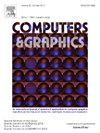Enhanced multi-scale feature adaptive fusion sparse convolutional network for large-scale scenes semantic segmentation
IF 2.5
4区 计算机科学
Q2 COMPUTER SCIENCE, SOFTWARE ENGINEERING
引用次数: 0
Abstract
Semantic segmentation has made notable strides in analyzing homogeneous large-scale 3D scenes, yet its application to varied scenes with diverse characteristics poses considerable challenges. Traditional methods have been hampered by the dependence on resource-intensive neighborhood search algorithms, leading to elevated computational demands. To overcome these limitations, we introduce the MFAF-SCNet, a novel and computationally streamlined approach for voxel-based sparse convolutional. Our key innovation is the multi-scale feature adaptive fusion (MFAF) module, which intelligently applies a spectrum of convolution kernel sizes at the network’s entry point, enabling the extraction of multi-scale features. It adaptively calibrates the feature weighting to achieve optimal scale representation for different objects. Further augmenting our methodology is the LKSNet, an original sparse convolutional backbone designed to tackle the inherent inconsistencies in point cloud distribution. This is achieved by integrating inverted bottleneck structures with large kernel convolutions, significantly bolstering the network’s feature extraction and spatial correlation proficiency. The efficacy of MFAF-SCNet was rigorously tested against three large-scale benchmark datasets—ScanNet and S3DIS for indoor scenes, and SemanticKITTI for outdoor scenes. The experimental results underscore our method’s competitive edge, achieving high-performance benchmarks while ensuring computational efficiency.

求助全文
约1分钟内获得全文
求助全文
来源期刊

Computers & Graphics-Uk
工程技术-计算机:软件工程
CiteScore
5.30
自引率
12.00%
发文量
173
审稿时长
38 days
期刊介绍:
Computers & Graphics is dedicated to disseminate information on research and applications of computer graphics (CG) techniques. The journal encourages articles on:
1. Research and applications of interactive computer graphics. We are particularly interested in novel interaction techniques and applications of CG to problem domains.
2. State-of-the-art papers on late-breaking, cutting-edge research on CG.
3. Information on innovative uses of graphics principles and technologies.
4. Tutorial papers on both teaching CG principles and innovative uses of CG in education.
 求助内容:
求助内容: 应助结果提醒方式:
应助结果提醒方式:


